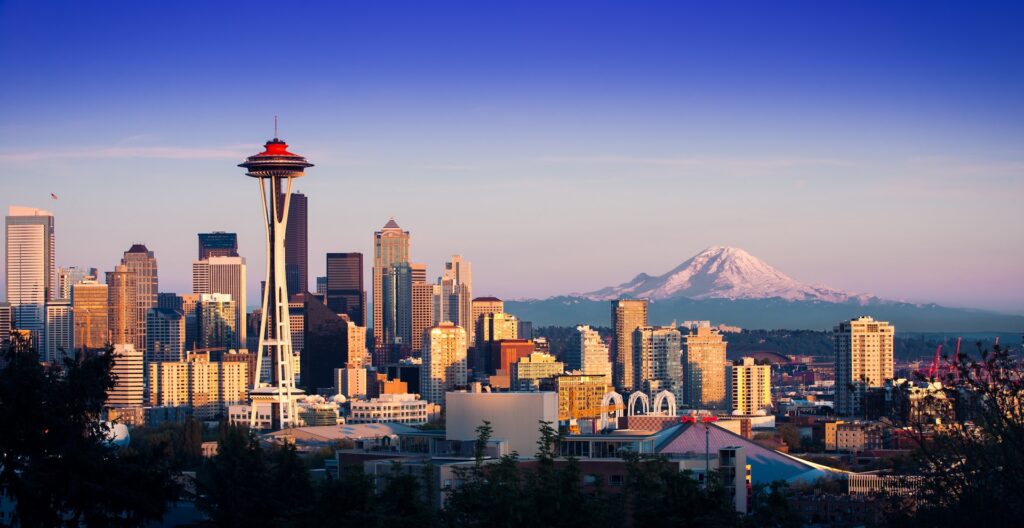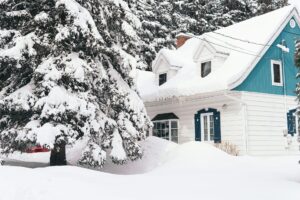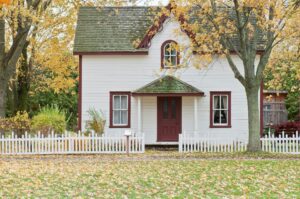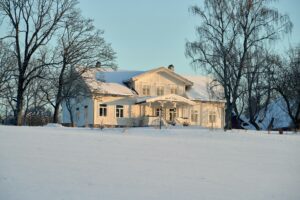Seattle’s gentle marine climate, marked by seasonal rains and mild but dark winters, places unique demands on a home’s windows. For many Seattle residents, upgrading to energy-efficient windows often feels like a straightforward way to keep heat indoors, moisture out, and natural light abundant. Yet questions remain: What do the ratings mean? Which window pane configuration is right for the Pacific Northwest? And how do you know when it’s time to upgrade?
Below, we explore available energy-efficiency options for Seattle homeowners and share how to determine the right balance of performance, cost-effectiveness, and style. Throughout, you’ll see how modern window technologies can help you make the most of Seattle’s light while protecting against the region’s cool, damp conditions.
If you need personalized guidance specific to your Seattle property, HOMEMASTERS is here to help. We’re available to walk you through options, discuss savings, and ensure an effortless installation process that fits your lifestyle.
Understanding Window Efficiency Ratings
The world of window efficiency boils down to a few core metrics that measure how effectively a window insulates, blocks unwanted heat, and lets in beneficial light. A better grasp of these ratings ensures you invest in windows that match Seattle’s moderate climate without wasting money on features you might not need.
U-Value (or U-Factor):
This measurement shows a window’s insulation capability. A lower U-Value means the window does a better job keeping interior warmth from escaping. In Seattle, where winter temperatures often dip into the 40s, focusing on windows with a low U-Value helps maintain comfortable indoor temperatures without overburdening your heating system.
Solar Heat Gain Coefficient (SHGC):
SHGC reflects how much solar radiation enters through the glass. If you want to reduce cooling needs in summer, you’ll want a lower SHGC. However, given Seattle’s milder temperatures and frequent overcast skies, many homeowners choose a slightly higher SHGC to bring in a bit more radiant heat and light during cool months.
Visible Transmittance (VT):
Sometimes labeled as visible light transmittance (VLT), this metric shows how much visible light passes through the window. Because winter days can be gray, optimizing for higher VT can make interiors feel brighter and more inviting.
Air Leakage:
Windows can also come with a rated air-leakage indicator. Look for lower ratings, which denote less air infiltration, and, in the damp Seattle region, protection against unwanted drafts and moisture intrusion.
When you compare windows, pay attention to the labels supplied by trusted organizations such as the [National Fenestration Rating Council (NFRC)](https://www.nfrc.org/) and [ENERGY STAR®](https://www.energystar.gov/). Their easily recognized stickers clarify each metric, so you can choose windows that balance insulation, solar heat gain, and light for Seattle’s climate.
Seattle’s Climate and Window Performance
Nestled between the Cascades and Puget Sound, Seattle’s marine climate presents damp winters, occasional chilly winds, and mild summers. While the temperature seldom drops to extreme lows, consistent moisture and unpredictable swings between warm and cool can challenge a home’s thermal envelope.
For residents, the balance is twofold: On one hand, you want to retain heat during Seattle’s nine or so months of chillier weather; on the other, you don’t want to trap too much heat during the summer. That’s where the combination of low U-Values and moderate SHGC can make a real difference. Modern windows often incorporate advanced coatings, specialized gas fills, and sealed edges that reduce conducted or convected heat transfer. This approach pays dividends in lower heating bills and a more comfortable living space, especially during those drizzly spring or autumn evenings when consistent warmth indoors becomes a necessity.
More subtle, yet equally important, is moisture resistance. In a region prone to steady rain, storms, and consistently high humidity, windows must form a solid barrier against water seepage and condensation. Modern frames with well-engineered weatherstripping and properly sealed glass units help maintain your home’s indoor air quality while minimizing mold risk. A well-managed system also leads to less window maintenance over the years, the hallmark of smart, climate-tuned window selection.
Double vs Triple Pane from a Seattle Perspective
A frequent debate in the world of window upgrades is the choice between double-pane and triple-pane models. Both reduce heat transfer, maintain indoor comfort, and offer different degrees of noise dampening. In Seattle, your decision often depends on how deep you want to go in improving insulation and whether the extra cost of triple-pane windows will pay off in consistent savings.
Double-Pane:
These windows feature two layers of glass separated by a sealed airspace (often filled with an insulating gas like argon). Double-pane windows are typically sufficient for mild climates like Seattle’s, providing solid insulation and reducing exterior noise from busy urban streets. They often cost less than triple-pane windows and weigh less, which may reduce installation complexity.
Triple-Pane:
A third layer of glass further lowers the U-Value and can significantly reduce noise. In colder regions, the energy savings make it a no-brainer. However, Seattle’s temperate climate doesn’t typically require the extra insulation capacity. Still, if you live near a busy thoroughfare, an airport flight path, or want to extraordinarily minimize chilly drafts and condensation, triple-pane may be worth the investment.
For many homeowners, quality double-pane windows with enhanced coatings offer a strong balance of cost and performance. Triple-pane becomes more appealing if you want to absolutely minimize any heat loss, create a quieter interior, or potentially boost a home’s overall resale value. Weigh the incremental cost carefully against your comfort goals, monthly bill reduction, and how long you plan to stay in the home.
Frame Materials and Their Impact
Although window glazing steals the spotlight, the choice of frame material is just as important. Different materials handle Seattle’s damp climate in distinct ways, so understanding the pros and cons can help you preserve both energy efficiency and curb appeal.
Vinyl:
Popular due to its affordability and good insulation qualities, vinyl can hold up well in damp weather and won’t rust or rot. Look for reinforced vinyl frames that remain rigid over time.
Fiberglass:
Known for its strength, fiberglass frames resist warping, swelling, and corrosion. They often cost a bit more than vinyl, but they typically last longer and accept paint, allowing homeowners to update the frame’s color if desired.
Wood:
Wood frames can be beautiful and deliver strong natural insulation. However, they require more meticulous care, especially in Seattle’s moisture-heavy environment. Regular painting or staining can protect against rot, but neglecting upkeep can compromise the frames over time.
Aluminum:
Lightweight and relatively inexpensive, aluminum conducts heat more readily than other options, making it less insulating. In Seattle, it can work if the metal frames incorporate a thermal break, but aluminum is most popular for specialized architectural designs rather than strictly for energy savings.
Because of the region’s consistent rainfall, materials that resist moisture and provide solid insulation are often the top choice for Seattle architectures. For a more classic appearance or to meet stringent historic-district guidelines, choose clad wood frames with exterior protection. Regardless of material, ensure proper weatherstripping and routine inspections to keep frames protected and sealed.
Low-E Coatings and Gas Fills Explained
If you’ve spent time researching windows, you’ve likely encountered references to “Low-E” (low-emissivity) coatings and insulating gas fills like argon or krypton. These technologies help windows become more than just glass, they transform them into barriers that optimize indoor comfort without losing the benefits of natural lighting.
Low-E Coatings:
Thin metallic coatings applied to window glass reflect thermal energy back where it came from. In the cooler months, high-performance Low-E coatings keep your indoor warmth from radiating out. In summer, they block hot solar rays from raising interior temperatures. The key is finding a Low-E formulation that suits Seattle’s moderate climate, some coatings amplify solar heat gain, which can be valuable during mild winters, while others are more reflective for hot, sunny areas.
Gas Fills:
Filling the space between panes with inert gases like argon or krypton further reduces heat transfer. These gases are denser than air, slowing thermal exchange. While the difference from a homeowner’s perspective can be subtle, every layer of efficiency improves insulation and may reduce monthly heating bills.
In Seattle, many window options feature a balanced Low-E formula, sometimes referred to as a “neutral” Low-E, coupled with argon gas for cost-effective performance. The result is a window that efficiently separates your indoor environment from the roaming marine air outside, preserving cozy warmth when you need it and letting beneficial sunlight stream through.
Maximizing Natural Light in Dark Months
From October to April, Seattle’s short, often cloud-covered days can feel a bit dim. To add brightness and combat the “winter blues,” proper window design ensures the interior remains inviting and energized.
Thoughtful window placement and style can significantly boost daylight. Expansive windows in common areas brighten living rooms, dining rooms, or home offices. Bay or bow windows also capture light from multiple angles. If your home’s structure or remodel plans allow, consider installing transom windows above doorways or in unexpected spots, these smaller windows flood hallways or staircases with a surprisingly large amount of light.
Visually, consider frame color and interior design. Lighter-toned decor around windows can bounce incoming daylight deeper into the room. Even a well-positioned mirror can channel extra glow on overcast afternoons. By combining higher visible transmittance (VT) glass with strategic interior design, you’ll make spaces feel welcoming even when overcast skies persist.
When Window Replacement Makes Financial Sense
Many Seattle homeowners suspect they need new windows but worry about the cost. How do you decide when an upgrade is worth the expense? A practical starting point is to look for clear signs:
Drafts and Comfort Issues:
During cooler months, do you feel an obvious cold draft near the window? Are there temperature differences between rooms? New, well-sealed windows eliminate unwanted airflow and deliver consistent warmth.
Frequent Condensation:
Excess moisture on the interior glass surface can indicate a seal failure or poor insulation. Mild condensation may form temporarily during very cold weather, but persistent fogged windows can be a red flag of more serious issues.
Noticeably High Utility Bills:
If you keep your thermostat steady but costs keep climbing, poor window insulation may be contributing unnecessarily.
Evidence of Rot or Damage:
Rotting frames or rapidly peeling paint point to moisture infiltration. Catching these issues early can help you avoid more substantial water damage in the walls.
When calculating the return on investment (ROI), factor in the potential monthly savings on heating bills, the increase in home value, and the enhanced daily comfort. Also include the intangible benefit of improved curb appeal, reduced maintenance, and a tighter indoor environment. Generally, if your windows are more than 15–20 years old, it’s worth exploring modern replacements for both aesthetics and efficiency. For personalized guidance on whether a window upgrade makes financial sense for you, HOMEMASTERS can conduct an on-site evaluation and offer recommendations tailored to your home’s style, orientation, and existing insulation.
Installation Considerations for Seattle Homes
Even the most efficient window on paper loses value if installed improperly. In a rainy environment like Seattle, advanced moisture management techniques are vital:
Sealing and Flashing:
Proper flashing around the window’s perimeter helps direct water away from the frame. Good flashing materials, like flexible flashing tape and high-quality building wraps, shield your home from potential leaks.
Weatherstripping:
Even brand-new windows need proper weatherstripping to block drafts. Look for compression or bulb weatherstrips that form a tight seal.
Structural Checks:
Old frames in older Seattle homes sometimes hide hidden rot or water damage. Addressing these issues before installation ensures the new windows perform at their best for the long haul.
Working with an experienced installer ensures every detail is accounted for. HOMEMASTERS emphasizes thorough pre-installation inspections to identify potential water-intrusion problems. Then we implement proven best practices to secure windows, seal edges, and protect your home from Seattle’s moisture-laden environment.
Available Rebates and Incentives
Energy efficiency isn’t just a trend, it’s a priority encouraged by local utilities and government programs. In the Seattle area, you may find rebates or incentives designed to lower the cost of upgrading your windows:
Utility Rebates:
Local providers may offer credits or rebates if you install ENERGY STAR®-certified windows with below-specific U-Values. Check your utility’s official website or call to see if your project qualifies.
Federal Tax Credits:
Depending on current federal legislation, you may receive tax credits for energy-efficient home improvements. Check the [U.S. Department of Energy](https://www.energy.gov/) site or consult a tax professional to confirm eligibility.
Special Programs:
Occasionally, state or city-level initiatives provide special financing options or additional rebates for homeowners making efficiency improvements. Keep an eye out for pilot programs that target window replacements in older neighborhoods or areas aiming to reduce energy consumption.
Combining rebates, special rates, and manufacturer promotions can significantly soften the initial investment in new windows. In many cases, savvy homeowners stack these incentives to enjoy year-round comfort and resource savings.
Conclusion
Energy-efficient windows in Seattle serve as a transformative upgrade for any home, merging utility savings with enhanced comfort, great views, and improved resistance to the region’s frequent rain. Whether you favor double-pane or triple-pane, vinyl or fiberglass, there are locally proven solutions that align with your budget and priorities. The secret to success lies in balancing a window’s insulation profile with natural light transmittance and moisture-sealing capabilities, essentials in the Pacific Northwest.
If you’ve noticed rising energy bills, cold drafts, or simply feel your windows look outdated, exploring a replacement may open the door to renewed comfort and peace of mind. With careful product selection based on real-world performance in Seattle’s climate, you can create a more sustainable home that harnesses each glimmer of daylight while keeping cold air firmly outdoors.
When you’re ready to move ahead or simply want more information, HOMEMASTERS stands by to guide your dream window project. From an in-depth evaluation of your existing windows through expert installation and beyond, our aim is to enrich your home’s warmth, efficiency, and style. Reach out today for a personalized consultation and learn how energy-efficient windows can make a tangible difference in your Seattle home.




